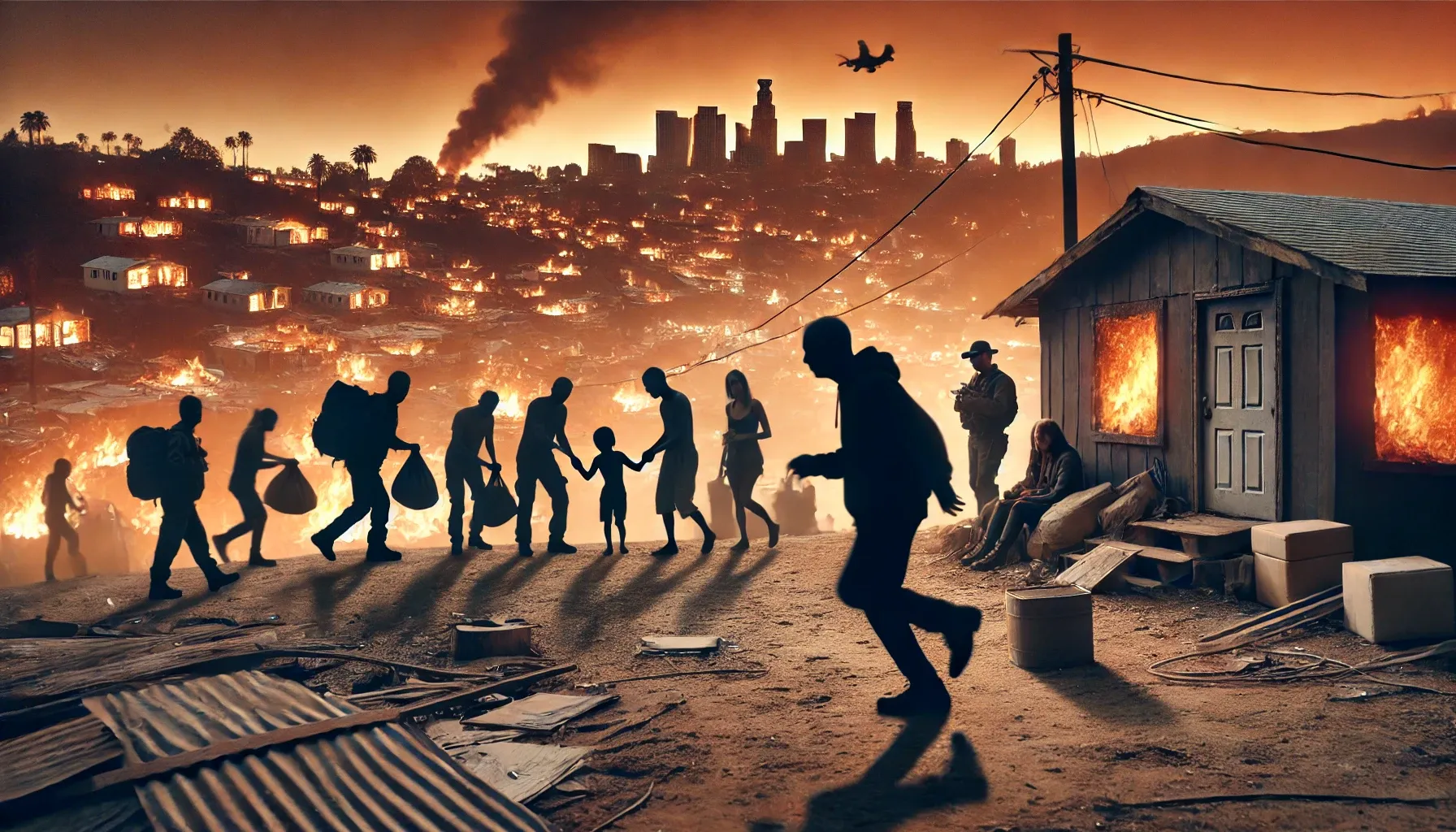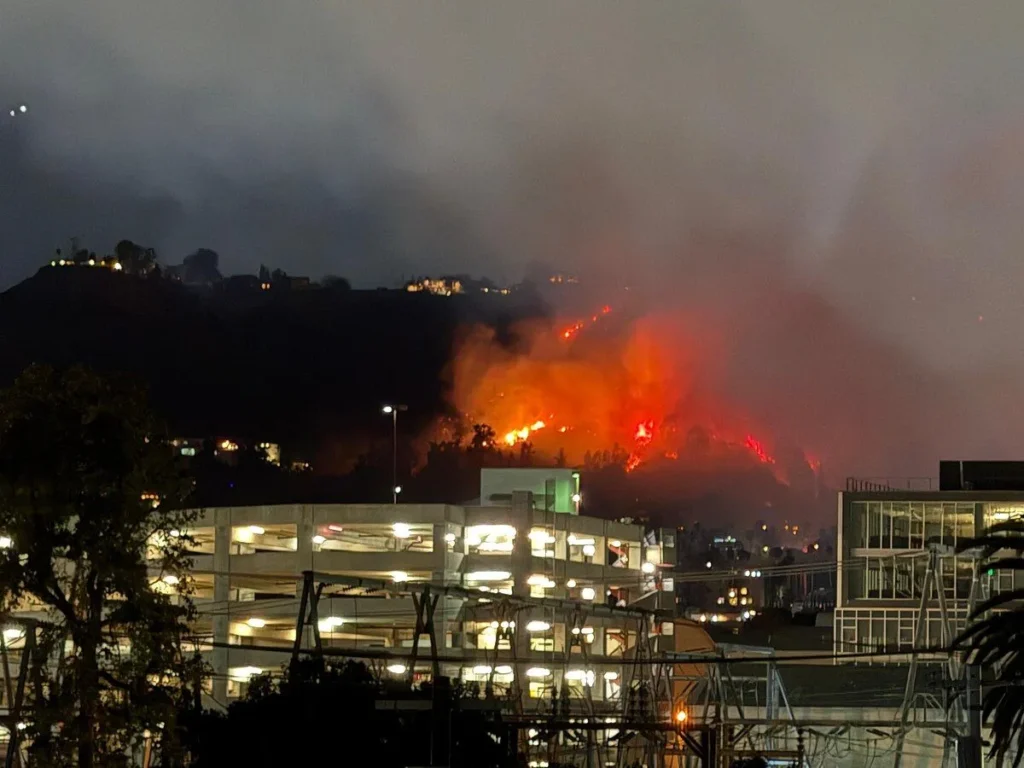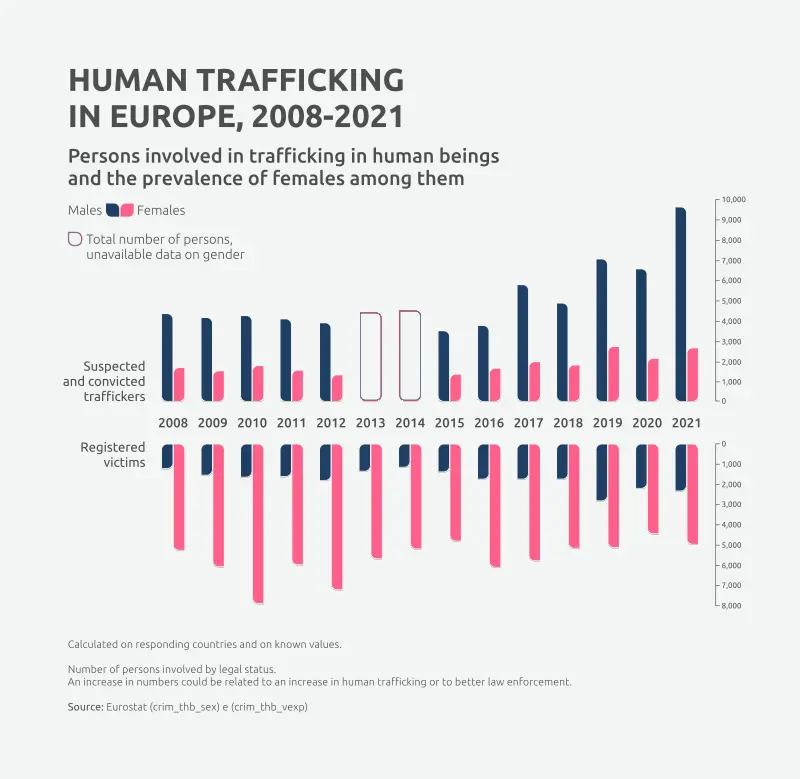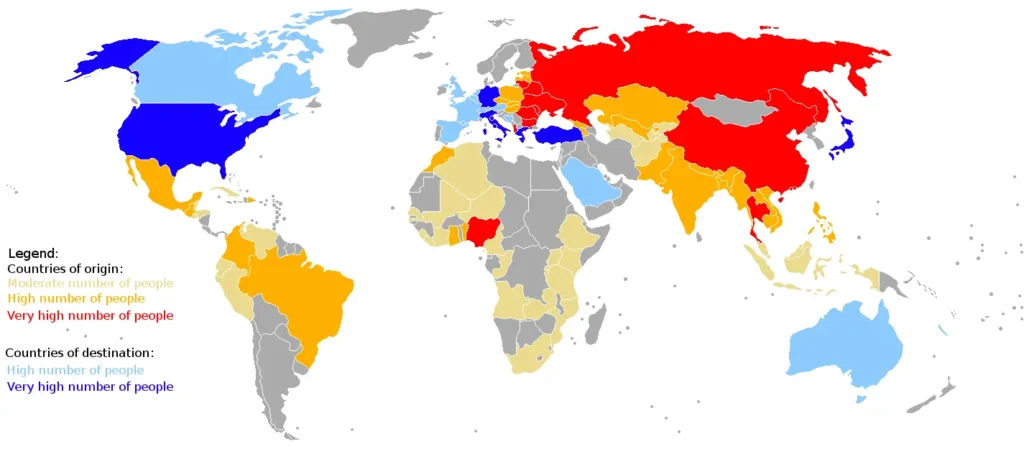Address
304 North Cardinal St.
Dorchester Center, MA 02124
Work Hours
Monday to Friday: 7AM - 7PM
Weekend: 10AM - 5PM

The recent wildfires that swept through Los Angeles in early 2025 have left a trail of destruction, displacing thousands of residents and causing billions of dollars in damages. The Palisades and Eaton fires alone have burned over sixty square miles, forcing the evacuation of nearly two hundred thousand people and straining emergency services to their limits. While the immediate concerns focus on property loss, environmental damage, and infrastructure recovery, a less visible but equally concerning consequence is emerging—the potential surge in human trafficking.
Natural disasters have long been recognized as catalysts for human exploitation, and the chaos following the Los Angeles wildfires presents the perfect conditions for traffickers to thrive. With Los Angeles representing a West Coast human trafficking hub, displaced individuals facing housing instability, financial hardship, and lack of access to essential services are particularly vulnerable to predatory tactics. The aftermath of such disasters often leads to a breakdown in community structures, creating an environment where traffickers can exploit the most vulnerable under the guise of providing assistance or employment opportunities. With mysterious “help” signs now appearing near the Union Pacific railroad yard in Los Angeles, concerns about human trafficking in Los Angeles continue to grow.

Research and case studies from previous natural disasters have shown that traffickers exploit moments of crisis to target displaced populations. In the aftermath of Hurricane Katrina in 2005, reports surfaced of women and children being coerced into exploitative labor and sex trafficking. Similar patterns emerged after the 2010 Haiti earthquake, when traffickers posed as aid workers to abduct orphaned children. These examples highlight how disaster-stricken communities, overwhelmed by recovery efforts, become prime targets for traffickers seeking to capitalize on vulnerabilities.
Los Angeles, with its already high rates of homelessness and economic disparity, is particularly susceptible to these threats in the wake of the fires. The city’s social services, stretched thin by the demands of disaster response, may struggle to monitor and support at-risk individuals, leaving them exposed to fraudulent offers of housing, employment, or financial assistance. Many of the displaced residents are living in temporary shelters or makeshift encampments, environments where traffickers can easily operate under the radar and manipulate individuals desperate for stability. Writ-large, disasters show many of the red flags of human trafficking.

The economic impact of the wildfires has been devastating for businesses and individuals alike. With entire neighborhoods reduced to ashes, many residents have lost their homes, jobs, and sources of income. Small businesses, especially those reliant on tourism and retail, are struggling to recover, leaving workers unemployed and desperate for new opportunities. Traffickers are known to take advantage of such financial despair by offering jobs that promise quick cash, only to trap individuals in exploitative working conditions with little or no pay.
Undocumented immigrants, who make up a significant portion of the Los Angeles workforce, are particularly vulnerable. Many are reluctant to seek help from government agencies for fear of deportation and instead turn to underground job markets that may be controlled by traffickers. With construction and clean-up jobs in high demand following the fires, unscrupulous labor brokers could exploit these workers by withholding wages, confiscating identification documents, and forcing them to work under unsafe conditions with no legal recourse.
In addition to economic vulnerabilities, the psychological toll of the wildfires cannot be overlooked. Trauma, grief, and uncertainty create a sense of helplessness, making individuals more susceptible to coercion. Children and teenagers who have lost their homes or family members are at heightened risk of exploitation, as traffickers often target young people who lack stable support systems. In previous disasters, reports have shown traffickers posing as benefactors, offering shelter and care to minors only to force them into labor or sex work.
The Los Angeles Police Department and federal agencies such as Homeland Security Investigations have acknowledged the increased risk of trafficking in the aftermath of the wildfires. However, disaster response efforts are largely focused on immediate relief, such as providing food, water, and shelter to affected populations. This diversion of resources means that anti-trafficking initiatives may take a backseat, allowing traffickers to exploit the chaotic environment with minimal interference.
Law enforcement officials face significant challenges in identifying and addressing trafficking cases in disaster zones. Displaced individuals often move frequently between shelters, hotels, and temporary housing, making it difficult to track and support potential victims. Additionally, traffickers use sophisticated tactics to avoid detection, frequently changing locations and using coercion to prevent victims from seeking help.
Despite these challenges, local and national agencies are working to incorporate anti-trafficking measures into their disaster response strategies. Outreach programs are being implemented in shelters to educate displaced residents about trafficking risks and how to report suspicious activity. Community organizations and non-profits are also stepping up efforts to provide legal and social support to individuals who may be at risk. However, advocates argue that more proactive measures are needed to prevent trafficking from taking root during the recovery process.
Community organizations have played a critical role in addressing the intersection between disasters and human trafficking. In the wake of the Los Angeles wildfires, groups such as the Coalition to Abolish Slavery and Trafficking (CAST) and Journey Out have increased their outreach efforts, providing information on how individuals can protect themselves from traffickers. These organizations have set up hotlines, emergency housing assistance, and legal aid services to help those affected by the fires avoid falling prey to exploitation.
Faith-based groups and local businesses are also stepping in to fill the gaps left by overwhelmed government agencies. Churches and community centers have become hubs for distributing resources and offering counseling to those dealing with displacement. Some businesses are providing temporary employment to displaced individuals, helping them avoid the lure of traffickers who promise fast money with hidden dangers.
The media has played a crucial role in raising awareness about the potential risks of trafficking in the aftermath of the fires. Local news outlets and social media influencers have highlighted the issue, encouraging residents to be vigilant and report any suspicious behavior. Public awareness campaigns emphasize the warning signs of trafficking, such as individuals who appear fearful, disoriented, or controlled by someone else, as well as job offers that seem too good to be true.

The long-term impact of the 2025 wildfires on human trafficking in Los Angeles is yet to be fully realized, but experts warn that the repercussions could last for years. Displacement and economic instability do not resolve overnight, and traffickers often capitalize on prolonged vulnerabilities. If proactive measures are not taken, the fires could leave a legacy not just of environmental damage, but of increased exploitation and human suffering.
Policy changes are necessary to ensure that anti-trafficking efforts are integrated into disaster response planning from the outset. Lawmakers and advocacy groups are calling for increased funding for survivor services, better coordination between disaster relief agencies and anti-trafficking organizations, and stronger labor protections for workers involved in post-disaster reconstruction efforts. Preventing trafficking should be seen as an essential component of disaster resilience, not just an afterthought.
As Los Angeles rebuilds in the wake of the wildfires, the community must remain vigilant in protecting its most vulnerable residents. Through increased awareness, stronger policies, and community-driven initiatives, the city can prevent traffickers from exploiting disaster victims and work toward a safer, more resilient future.
The devastating Los Angeles wildfires of 2025 have brought more than just environmental and economic hardship; they have exposed thousands of residents to increased risks of human trafficking. The chaos and displacement caused by such disasters create opportunities for exploitation, but with coordinated efforts from law enforcement, advocacy groups, and the community, these risks can be mitigated. Raising awareness, providing support services, and integrating anti-trafficking measures into disaster response plans are crucial steps in ensuring that disaster victims are not further victimized.
As recovery efforts continue, it is vital to remember that the hidden impacts of disasters often extend far beyond what is visible. Addressing human trafficking in the aftermath of the fires will require sustained attention and action from all sectors of society.